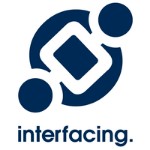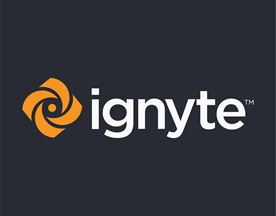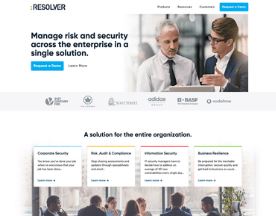In the ever-evolving world of business, managing risks effectively is paramount to success. One crucial tool that has become indispensable for organizations in this endeavor is the COSO Framework.
What is the COSO Framework? The Committee of Sponsoring Organizations of the Treadway Commission. It was initially created to help organizations combat financial fraud.
In this comprehensive guide, we will delve deep into the world of COSO, exploring its components, benefits, and practical applications. By the end of this article, you’ll have a clear understanding of how this framework can help you manage risks, enhance governance, and ultimately drive better results for your business.

Introduction to COSO: Unveiling the Basics
The Committee of Sponsoring Organizations of the Treadway Commission, commonly known as COSO, developed the COSO Framework. It was initially created to help organizations and internal auditors combat financial fraud, but it has since evolved into a comprehensive framework for internal control, risk management, and corporate governance.
The COSO Framework is a valuable tool for organizations to manage risks and improve governance. Originally designed to combat financial fraud, it has evolved into a comprehensive, integrated framework for internal control and risk management.

The Components of the COSO Framework
The COSO Framework consists of five integrated components that collectively provide a structured approach to internal control and enterprise risk management. Let’s break down each component:
Component 1: Control Environment
The most effective internal control system and environment sets the tone for an organization regarding the importance of internal control and risk management. It encompasses factors like the organization’s culture, leadership style, and commitment to ethical values.
Key Points:
- The control environment is the foundation of the COSO Framework.
- It is influenced by an organization’s culture, leadership, and commitment to ethical values.
Component 2: Risk Assessment
Risk assessment involves identifying and assessing potential risks that may affect an organization’s ability to achieve its objectives. This component requires organizations to evaluate the likelihood and impact of these risks.
Key Points:
- Risk assessment is about identifying and evaluating potential risks.
- Organizations must assess the likelihood and impact of these risks.
Component 3: Control Activities
Control activities are the policies, procedures, and practices that help mitigate identified risks. These activities ensure that internal controls are in place to address vulnerabilities.
Key Points:
- Control activities are policies and procedures that mitigate risks.
- They help ensure that internal controls are in place.
Component 4: Information and Communication
Effective information and communication ensure that relevant information flows throughout the organization. It ensures that everyone is informed about their roles and responsibilities regarding the internal control system, and risk management.
Key Points:
- Information and communication facilitate the flow of relevant information.
- They ensure that everyone knows their roles and responsibilities.
Component 5: Monitoring Activities
Monitoring activities involve regularly assessing the effectiveness of internal controls and risk management processes. It helps organizations implement internal controls and identify and rectify deficiencies promptly.
Key Points:
- Monitoring activities assess the effectiveness of internal controls.
- They help organizations identify and rectify deficiencies.

The Importance of COSO: Benefits for Your Organization
Implementing the COSO Framework offers numerous benefits to organizations, regardless of their size or industry. Let’s explore these advantages in detail.
Enhanced Risk Management
The COSO Framework empowers organizations to identify and assess risks systematically. This structured approach enables them to proactively address potential threats, minimizing the chances of financial losses, reputational damage, and other adverse consequences.
Key Points:
- COSO Framework helps organizations identify and assess risks systematically.
- It enables proactive risk mitigation.
Improved Corporate Governance
Effective corporate governance is critical for maintaining trust among all public companies and stakeholders. By implementing the COSO Framework, organizations can demonstrate their commitment to transparent and ethical operations, enhancing their reputation and credibility.
Key Points:
- COSO Framework contributes to improved corporate governance.
- It demonstrates an organization’s commitment to transparency and ethics.
Increased Operational Efficiency
Efficient internal control systems and processes, as promoted by the COSO Framework, streamline operations and reduce the likelihood of errors and inefficiencies. This leads to cost savings and enhanced overall efficiency.
Key Points:
- COSO Framework promotes efficient internal control processes.
- It leads to cost savings and increased operational efficiency.
Regulatory Compliance
Many regulatory bodies and standards require private sector organizations to establish effective internal controls. Compliance with these regulations is easier to achieve with the COSO Framework in place, reducing the risk of legal penalties and fines.
Key Points:
- COSO Framework aids in achieving regulatory compliance.
- It reduces the risk of legal penalties and fines.
Enhanced Decision-Making
Access to accurate and timely information is crucial for effective decision-making. The COSO Framework ensures that relevant information flows within the organization, empowering decision-makers with the data they need.
Key Points:
- COSO Framework facilitates access to accurate and timely information.
- It empowers decision-makers with the data they need.

Practical Application of the COSO Framework
Now that we understand the components and benefits of the COSO Framework, let’s explore how you can practically apply it within your organization.
Assess Your Current Control Environment
Start by evaluating your organization’s existing internal control framework and environment. This includes understanding your company culture, leadership style, and commitment to ethical values. Identify areas where improvements can be made to create a more conducive environment for internal control and risk management.
Key Points:
- Begin by assessing your organization’s control environment.
- Identify areas for improvement.
Identify and Assess Risks
Conduct a thorough risk assessment to identify potential risks that could impact your organization’s objectives. Consider the likelihood and potential consequences of each risk. This step will provide you with a comprehensive list of risks to address.
Key Points:
- Conduct a comprehensive risk assessment.
- Consider both likelihood and potential consequences.
Implement Control Activities
Based on the risks identified, develop and implement control activities or policies and procedures to mitigate these risks. Ensure that these controls are designed to be effective and efficient in addressing vulnerabilities.
Key Points:
- Develop and implement control activities based on identified risks.
- Ensure controls are effective and efficient.
Establish Information and Communication Processes
Create processes to facilitate the flow of relevant information within your organization. Ensure that everyone understands their roles and responsibilities regarding internal control and risk management. Communication between internal and external communications should be clear and consistent.
Key Points:
- Establish processes for information and communication.
- Ensure clarity and consistency in communication.
Implement Monitoring Activities
Regularly monitor the effectiveness of your organizational structure, internal controls and risk management processes. This step involves assessing whether controls are functioning as intended and promptly addressing any deficiencies or issues that arise.
Key Points:
- Implement regular monitoring activities.
- Address deficiencies or issues promptly.
Continuous Improvement
The COSO Framework is not a one-time implementation; it’s an ongoing process. Continuously review and enhance your organization’s internal control system and risk management practices to adapt to changing circumstances and evolving risks.
Key Points:
- Continuous improvement is crucial.
- Adapt to changing circumstances and risks.

Software Tools for Implementing COSO Framework
To streamline the implementation of the COSO Framework within your organization, consider using software tools designed specifically for this purpose.
COSO ERM Software
It helps organizations effectively implement and manage internal control integrated framework the COSO Framework, offering risk assessment, control activities management, monitoring, and reporting features on a single platform.
MetricStream
MetricStream is a flexible and user-friendly governance, risk management, and compliance (GRC) platform that aligns with COSO. It includes features for risk assessment, control management, audit, and compliance monitoring.
LogicGate
LogicGate is a GRC platform that automates and streamlines COSO Framework processes, with customizable workflows, risk assessment, control activities, and integration capabilities.

Frequently Asked Questions (FAQ)
What is the COSO Framework?
The COSO Framework is a comprehensive tool for internal control, risk management, external financial reporting, and governance.
Why is the COSO Framework important?
It’s vital for effective risk management, governance, financial reporting, efficiency, compliance, and informed decisions.
What are the components of the COSO Framework?
Five components: Control Environment, Risk Assessment, Control Activities, Information and Communication, Monitoring Activities.
How can I apply the COSO Framework?
Assess your environment, identify risks, implement controls, establish communication, monitor, and continuously improve.
What are the benefits of COSO ERM Software?
Simplifies COSO Framework, aids risk assessment, control activities, and ensures COSO compliance.
Is the COSO Framework suitable for all organizations?
Yes, it’s adaptable and suitable for all sizes and industries.
How often should I monitor internal controls?
Regularly, based on risk and circumstances.
Can COSO help with regulatory compliance?
Yes, it establishes effective controls for compliance.
Is COSO Framework a one-time process?
No, it’s ongoing, adapting to change and risks.
What are common COSO Framework implementation challenges?
Resistance to change, resource constraints, and complex risk assessment.

Conclusion: Embrace the COSO Framework
In today’s dynamic business world, the COSO Framework is your ally. Understand its components, benefits, and practical application. Use tools like COSO ERM Software for seamless implementation. With this knowledge and commitment, you’ll empower your organization to thrive in a changing landscape.












